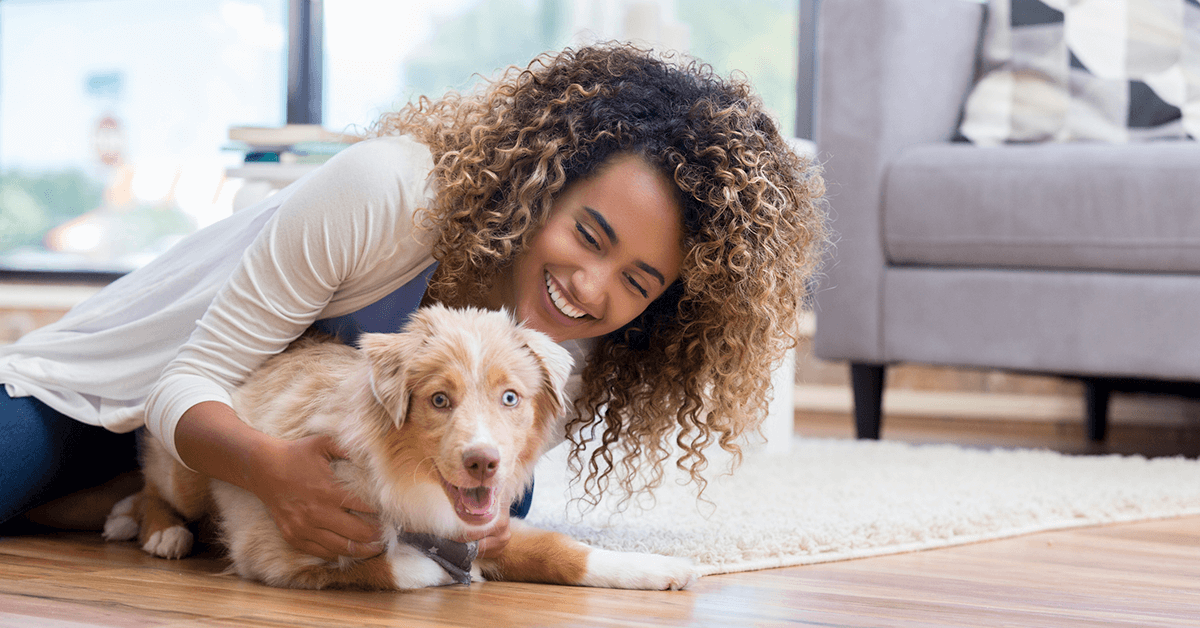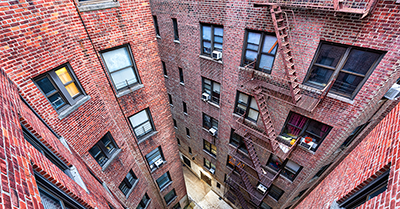
A Homeowners Guide to Adopting a Pet During the Pandemic
Homeowners across the country who are spending more time at home during the spread of COVID-19 (coronavirus) are looking to fill their time and homes with pets. The 24Pet® ShelterWatch Report shows that 1,191 new animals have arrived at shelters since the start of the pandemic. And while adoptions are down during the pandemic, the foster population is up by 21 percent.
If you’re looking for a COVID companion and want to foster a dog, adopt a cat, or even purchase a fish, there are certain things you, as a homeowner, should consider before adding a pet into your living arrangement. Welcoming an animal into your home is a big responsibility. Owning a pet isn’t all long walks and belly rubs. There are regulations, costs, and time commitments to understand. In this guide for homeowners looking to adopt a pet during the pandemic, you’ll learn about a few common areas that need special consideration so that when you do bring a pet home, it’s forever.
Before you decide to foster or adopt a pet, you should check out your local pet ordinances. Different types of animals come with different regulations and these regulations, or ordinances, vary by city and state. If you live in an area with a homeowner’s association, they will likely have their own ordinances in place.
Some common ordinances include pet licensing, vaccinations, leash laws, and restrictions on how many pets you can own. A homeowner’s association will likely be more concerned with ensuring your pet does not bother the rest of the neighborhood. Some homeowner’s associations may ban pets altogether.
Individual areas have varying restrictions on what type of pet homeowners are permitted to own. You may be surprised to find that animals like anteaters, tarantulas, alligators, and kangaroos are legal to own in some states. But just because you can own one, doesn’t mean you should. For anyone who’s watched Tiger King, you’ll know the cost and time needed to care for exotic pets is more than most homeowners can handle.
If you’re looking to adopt or foster a dog, or any animal requiring time outside, you’ll want to make sure your home’s outdoor space is adequate.
A study conducted by the National Association of REALTORS® showed that more than half of homebuyers tackle at least one home renovation project for their pet. The most popular project was fencing the yard. Building a tall, sturdy fence around the perimeter of your yard is a great way to give your pet the freedom to play without the worry.
If your pet is going to have free rein over the yard, you should also consider the landscaping and choose a layout that allows them space to romp and play without destroying your garden. Adding paths with durable materials will maintain the look of your yard and help you avoid worn-out grass patches in high pet traffic areas. Don’t forget to consider shade so your pet can relax comfortably on hot summer days.
The same principles used to guide outdoor pet-friendly design apply to the interior of your home as well. Perhaps the biggest issue when designing a pet-friendly interior is the flooring. Debbie Gartner, a flooring expert, recommends solid hardwood since it can be refinished when it’s scratched. If you’re adding new floors, selecting a rustic finish, or using reclaimed wood will help camouflage any scratches. Other durable flooring choices include concrete, tile, vinyl, or laminate.
When you’re picking out your pet, you should consider the size and layout of your home. If you’re bringing home a 75-pound golden retriever to a 1,000 square foot home. “You’ll be pretty sick of your house, in short order, if you’re always tripping over the dog,” Amy Ference, a REALTOR® in Bozeman, Montana says. “Trust me on this one.”
While remote work may have you home more often now, there will likely come a time when you’ll be out of the house again more often. You should plan for that and designate a space in your home where your pet can stay while you’re gone. This might mean keeping a crate in a corner of a room or dedicating an entire space free of dangers and valuables for your pet to hang out in while you’re out and about. Some animals experience separation anxiety which can lead to pacing (worn-out floors), scratching (destroyed doors or walls), and biting (torn up furniture). So soften the blow of your departure by leaving for short periods of time, assessing your pet’s reaction, and protecting your home accordingly.
Pets are generally covered under your homeowner’s insurance policy. The liability portion of your coverage will address injuries caused by your pet or damages to someone else’s property. However, what kind of pet you own, will affect your ability to obtain insurance. If you’ve got a sweet Calico kitten at home, you’ll likely have no problem finding an affordable plan. But you’ll be hard-pressed to find affordable insurance with an alligator in the house.
Your insurance rates may also increase depending on the specific breed of dog you foster or adopt. The article Home Insurance and Pet Guide notes, “We’ve found that the average home insurance rate increase for owning an ‘aggressive breed’ dog is only .3%. However, some companies charge much higher rates if you own an Akita, Alaskan malamute, chow, Doberman, German shepherd, pit bull, or Rottweiler.”
Your homeowner’s insurance will not cover veterinarian visits or property damage in your home. “According to insurance companies,” Christine Lacagnina writes in the article Does Homeowners Insurance Cover My Pets?, “you are responsible for monitoring your pet’s behavior and keeping them from damaging your house and/or other personal property.”
If your extra time at home due to the coronavirus has you searching for companionship in the form of a pet, make sure your home is equipped to handle your new addition, so that your new living arrangement is set up for long-term success.
Time to Focus on Affordable Housing
Taxes on real estate are not the answer. Sign the petition calling on Congress to address our country’s housing shortage.





